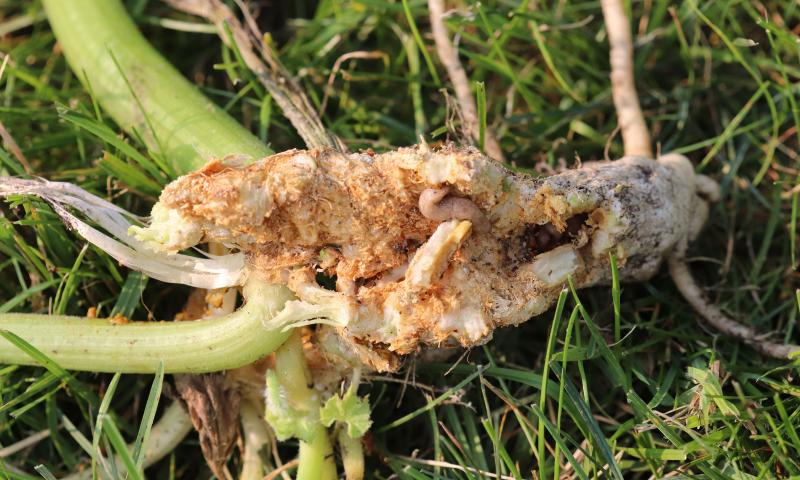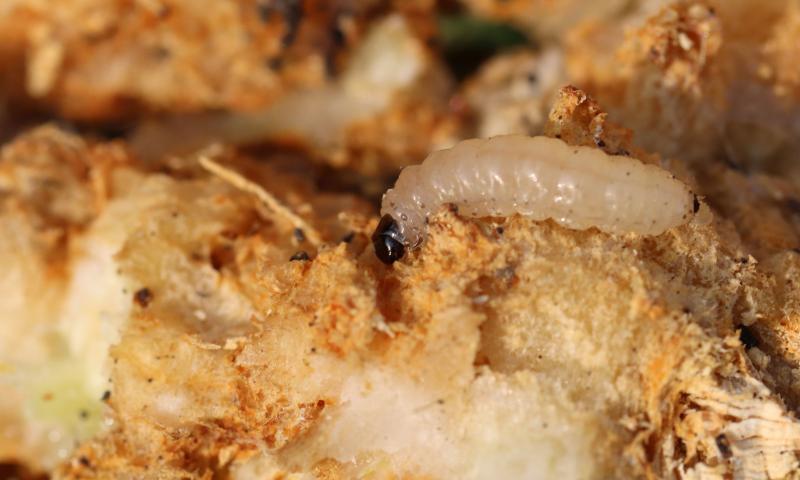
For many of us, this time of year is tough for our zucchini, squash and pumpkin plants. This year, most gardens were planted a little later than normal and, as a result, everything is still producing. Personally, my pumpkin plants have many leaves that are beginning to wilt, leaving them appearing as if they have simply given up. Similar symptoms may be observed in other squash crops as well.
A close inspection of the wilting plants may reveal a sawdust-like substance around the soil surface or on the base of the stem. When pushed, the plants typically will break and reveal clear evidence of insect feeding through the stem (Figure 1). The insect that is causing these issues is commonly known as the squash vine borer.
Identification

Squash vine borer adults belong to the clear-winged moth family (Sesiidae). These moths are often confused with wasps or bees due to their coloration and their clear wings. The squash vine borer moths are approximately 1/2 an inch long. They have an orange abdomen with a black spot on the top of each abdominal segment. The front pair of wings (closer to the head) are metallic green while the hind wings are clear. The antennae have a white band and the legs have similar white banding (Figure 2).
The larvae of the squash vine borer are cream colored with a dark brown head and dark brown pronotum (segment directly behind the head). The larvae will also have dark spots on each segment of their body (Figure 3). They are commonly found near the base of the plant inside the stems. Their feeding will result in a saw-dust like material being pushed out onto the stem or, leaves, or surrounding soil.
Lifecycle

Squash vine borer adult emergence occurs in late June through early July. However, like many of our other insect pests this year, they are a little behind schedule. They are good fliers, so they are capable of traveling long distances. Moths are commonly thought of as being only nocturnal, but many are active during the day – including the squash vine borer. After emergence, the female moth will lay eggs at the base of cucurbit plants. The eggs soon hatch, and the larvae bore into the stems to feed. The larvae will feed within the stem, which blocks water and nutrient flow to the rest of the plant, resulting in wilting. The squash vine borer larvae will feed for 4-6 weeks before exiting the stems and pupating in the soil.
Management
If you observe an infested plant, remove it from your garden immediately and destroy it. This will reduce the likelihood of the larvae successfully pupating and increasing the population for subsequent years. In early summer, watch for moth activity on squash plants. Alternatively, squash vine borer lurers can be purchased online or from garden stores and used to determine when moth activity is occurring. If they are present, a homemade bait trap made from a yellow container filled with soapy water can be used to reduce adult populations. Alternatively, an early and late planting of squash can be used to ensure that some plants will not be affected by the squash vine borers. Although insecticides can be used, applications have to occur when the adults are active because the larvae are protected inside the plant.


